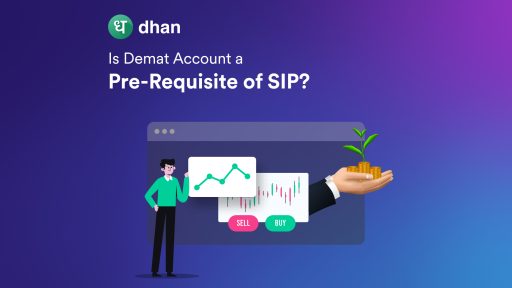Mutual funds are investment avenues that invest in different asset classes such as equity, debt, and more.
There are two types of plans when it comes to mutual fund investments: direct plans and regular plans. For this article, we will cover what is direct plan in mutual funds in detail.
What is a Direct Plan in Mutual Funds?
A direct plan in a mutual fund is an investment option where you buy units directly from the asset management company (AMC).
This approach bypasses any intermediaries like brokers or distributors. This absence of an agent means no commission fees, resulting in a lower expense ratio for the investor.
The lower expense ratio can lead to higher returns over time, as the savings from the eliminated commission are subject to reinvestment into the fund.
Within the direct mutual fund plans, there are two sub-categories that you should know.
Dividend Option
In this arrangement, you get payouts from the profits the fund has made. These dividends can be given out at regular intervals, such as quarterly, half-yearly, or annually.
However, both the timing and the amount of these payouts are not guaranteed and depend on how well the fund performs.
When dividends are declared, the fund’s Net Asset Value (NAV) decreases by the dividend amount. This option suits investors seeking regular income from their investments.
Growth Option
This option does not distribute dividends to investors. Instead, any earnings are put back into the fund.
This allows the investment to compound and grow more significantly over time. As a result, the NAV of your mutual fund units increases.
How to Invest in a Direct Mutual Fund Scheme?
Investing in direct mutual funds involves a few key steps. Here is a concise guide:
- Step 1: Visit the Dhan website and if you don’t have one, open an account.
- Step 2: To create an account, provide personal details, complete KYC (Know Your Customer) requirements, and link your bank account.
- Step 3: Submit necessary documents like a PAN card, Aadhar card, and a passport-sized photograph. Some platforms may offer paperless e-KYC for convenience.
- Step 4: Link your bank account to facilitate investments and receive redemption proceeds.
- Step 5: Research available direct mutual funds, and consider past performance, fund manager expertise, expense ratio, and investment strategy.
- Step 6: Decide on the investment amount and whether to make a lump sum investment or set up a Systematic Investment Plan (SIP) for regular contributions.
Common Mistakes to Avoid in Direct Plan Investments
When investing in direct plans of mutual funds, it is vital to be aware of common pitfalls that can hinder your investment goals. Here are some mistakes to avoid:
- Ignoring Asset Allocation: Not aligning investments with your financial goals and risk tolerance can lead to an imbalanced portfolio.
If you plan for retirement or other long-term objectives, giving weight to equity-oriented schemes over debt schemes will make you vulnerable to market downturn.
- Overlooking Costs: Although these plans have lower expense ratios, other costs can still impact returns.
Some costs in direct mutual fund investments include management fees and operational expenses such as registrar and transfer agent fees, audit fees, custodian fees, and marketing expenses.
- Neglecting Research: If you are a first-time investor and are unaware of the vital terms in the mutual fund industry, you must first conduct thorough research to understand how the plan works, what stocks are in the scheme and any news associated with the particular stock or sector. Failing to do so can result in poor investment choices.
- Frequent Trading: Mutual funds are for long-term investment. If you treat it as trading and engage in frequent buying and selling, then exit loads and tax implications can erode returns.
- Having Unrealistic Expectations: Mutual funds are subject to market risks. If you expect guaranteed or very high returns, you may face disappointment or even loss for redeeming units based on emotions.
- Not Considering Fund Manager’s Experience: The fund manager’s experience and track record are pivotal. A manager with a history of navigating market ups and downs successfully can be a valuable asset to your investment.
- Overlooking Risk Profile: Examine the scheme’s Riskometer, which indicates the risk level, such as ‘Moderate’ or ‘High’.
Additionally, consider your risk appetite, tolerance, and capacity. Align these with the fund’s characteristics and your financial goals.
Utilize tools like Beta to understand volatility relative to the market. You may consult with fund advisors for personalized risk assessment and suitable fund recommendations.
Conclusion
Direct plan in a mutual fund offers investors a straightforward route to invest directly with the mutual fund company. It skips the need for brokers or distributors and eliminates commission fees.
These plans often have lower expense ratios, potentially leading to higher returns over time. However, investors should avoid common mistakes such as chasing past performance, neglecting asset allocation, overlooking costs, and trading frequently.




